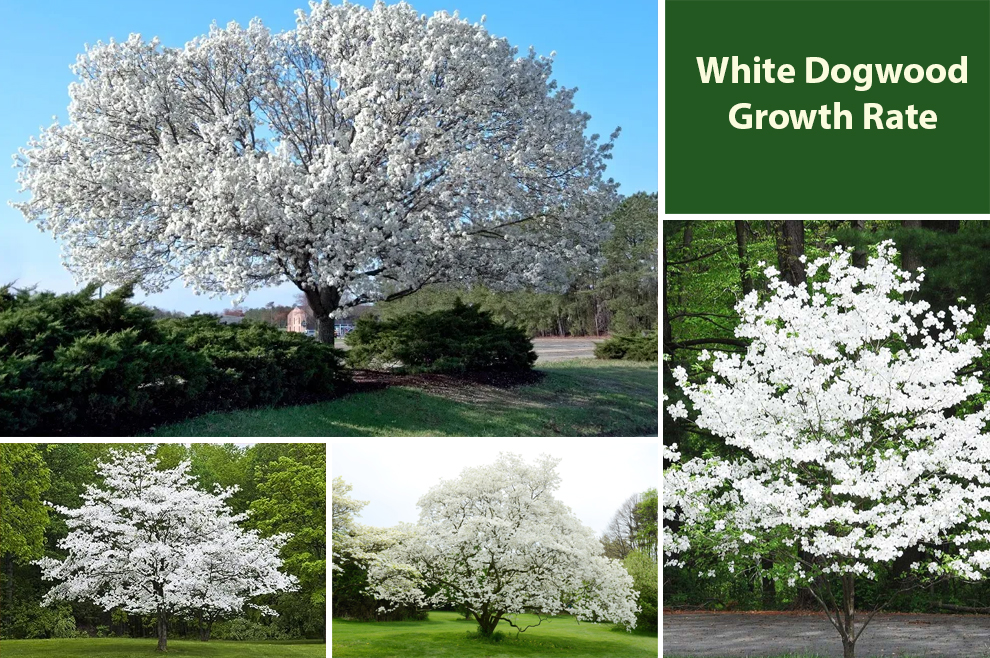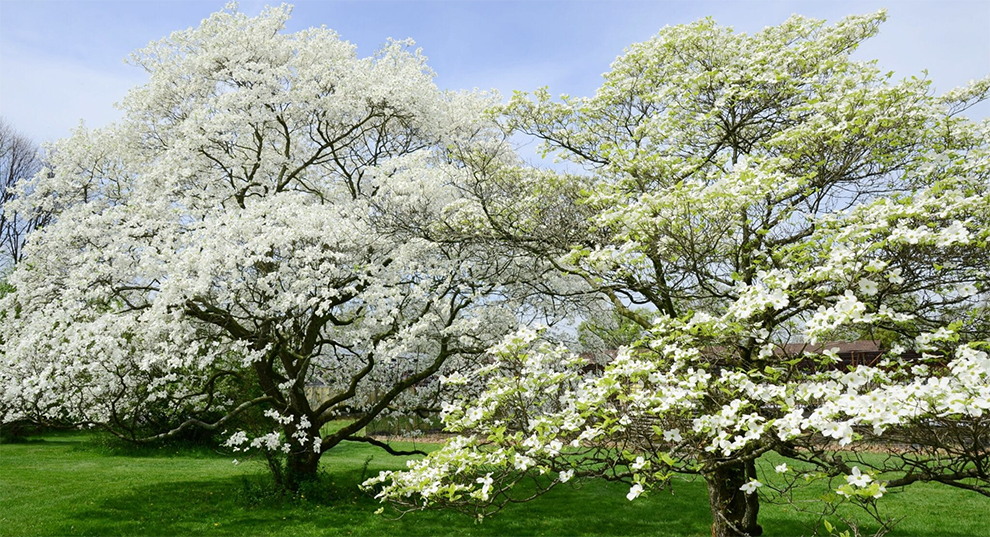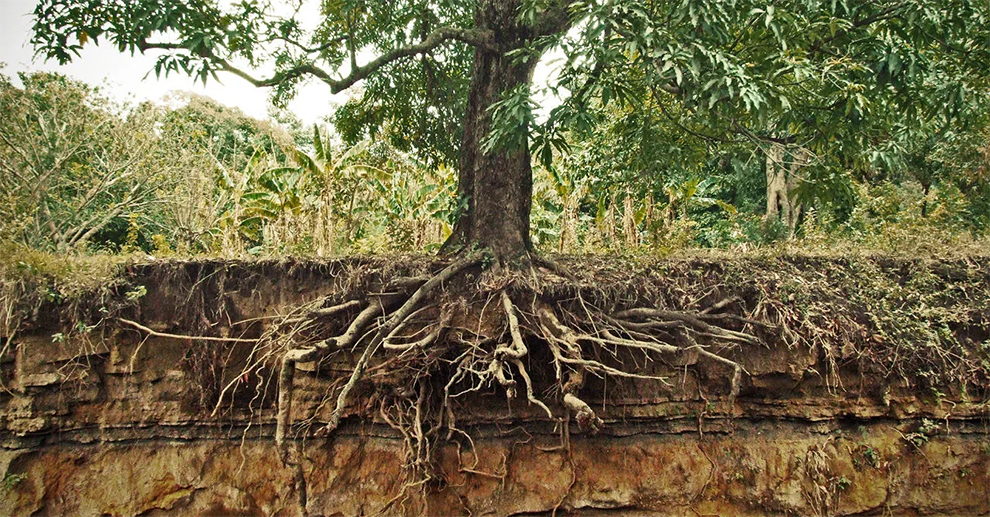White Dogwood Growth Rate: How Fast Do These Trees Grow?
White Dogwood Trees are never a cause of concern due to their growth rate. They grow slow and steadily around one to two feet annually with sturdy roots.

Botanically called the Cornus florida, the White Dogwood is a splendid deciduous tree. It is famous for its captivating beauty and moderate growth rate.
The white dogwood growth rate is characterized by measured and steady progress, making it a beautiful addition for landscaping and ornamental purposes.
With an average height increase between 13 and 24 inches per year, this beautiful tree depicts an unhurried and graceful development.
Over time, the White Dogwood tree reaches an impressive height of twenty-five feet, boasting an equal spread that adds to its overall picturesque and balanced appearance.
Having a medium growth rate, they strike a perfect harmony between prolonged endurance and swift expansion.
This measured pace lets the tree establish robust roots and develop a solid framework, ensuring its longevity and the ability to endure different environmental conditions.
Understanding how fast does a white dogwood tree grows is vital to provide it the right care to your dogwoods at the right stage.
The White Dogwood’s steady ascent to maturity with its spectacular pink or white blooms during spring can transform any landscape into a breathtaking view.
As it paints the scenery with its eye-catching presence, the White Dogwood tree stands as a testament to nature’s exquisite artistry and marvels of patient growth.
White Dogwood Tree Overview
| Scientific name | Cornus florida |
| Fruits | Produces small, red, berry-like fruits |
| Bloom time | Early spring |
| Growth rate | Slow to Moderate – 13 and 24 inches per year |
| Lifespan | Up to 80 years |
| Leaves | Oval-shaped, opposite, and dark green |
How Fast Does A White Dogwood Grow?
The White Dogwood tree has a variable growth rate, ranging from slow to moderate. This charming deciduous tree usually experiences height increases of approximately one to two feet per year.
Though some White Dogwood may see more moderate growth, others witness a slower surge in height, adding a delightful element of unpredictability to its development.
Upon maturity, the White Dogwood tree reaches an impressive height of twenty-five feet with an equal spread, showcasing its resilience and adaptability.
Its ability to develop at a variable pace lets it establish a sturdy framework and solid roots, contributing to its enduring presence in the gardens and landscapes.
Graced with eye-catching pink or white blooms during the spring, White Dogwood stands as a testament to the wonders of nature, offering a delightful surprise every year with its evolving growth patterns.
Related: Kousa Dogwood Growth Rate | Pink Dogwood Growth Rate | How Fast Do Dogwood Trees Grow?| Red Twig Dogwood Growth Rate
How Long Does It Take For A White Dogwood Tree To Grow And Mature?
On average, a White Dogwood tree takes approximately six to ten years to mature and achieve a mature height of 25 feet with an equal spread.
In this while, it undergoes significant development and growth, establishing its branching structure and root system.
As it matures, the tree starts yielding iconic pink or white blooms during the spring. Its spectacular flowers add to its overall charm and beauty.
After maturing, the White Dogwood continues to thrive and live for several decades, providing years of enjoyment while its seasonal displays and striking appearance.
Its ability to flourish and endure over time makes it a cherished addition to the gardens, parks, and landscapes, serving as a symbol of elegance and resilience.
Do White Dogwood Trees Enter Dormancy?

Yes.
White Dogwood trees enter dormancy. Dormancy is a natural survival mechanism depicted by the deciduous trees, including the White Dogwood.
In the colder months of winter and fall, the tree enters dormancy when the temperatures drop and daylight hours decrease.
In dormancy, the White Dogwood sheds its leaves as a means to guard itself and conserve energy from harsh environmental conditions.
As the tree becomes inactive, its metabolic processes decline, and it conserves resources to survive the harsh winters. The white flowering dogwood growth rate is minimal during this period. However, it does not halt completely.
Dormancy is imperative for the White Dogwood’s survival and health, as it lets the tree conserve energy, endure freezing temperatures, and prep for the upcoming growth season in spring.
Once the winter season ceases and the temperatures rise, White Dogwood emerges from dormancy and its active growth resumes. The development and dormancy cycle is crucial in the White Dogwood tree lifecycle.
Are White Dogwood Tree Roots Invasive?

No.
White dogwood trees are not considered invasive compared to other tree species.
While the tree forms a substantial root system to support its growth, it is compact and contained.
The White dogwood root system mainly spreads shallow and wide rather than deeply penetrating the soil. This characteristic helps stabilize the tree and extract water and nutrients from the upper soil layers.
Consequently, the root system is less likely to cause damage to underground utilities, pavements, or nearby structures.
Because of the non-invasive root system, White Dogwood is a suitable choice for growing near sidewalks, houses, and urban settings.
But you must give it ample space to grow and avoid overcrowding and potential root competition with other trees or plants.
Regular maintenance or pruning helps control the tree’s size and ensure its healthy growth sans causing undue disruptions.
Where To Plant White Dogwood Tree?
This variety of dogwood trees is popular and a versatile choice for planting in different landscapes. Here are some ideal considerations and locations keeping in mind white dogwood tree growth rate and growing habits:
1. Sunlight: White dogwood trees thrive in partial shade to full sun. So growing them in an area with filtered shade or dappled sun is ideal. This tree’s ability to thrive in both sun and shade makes it an excellent alternative for planting in different parts of the world.
2. Soil: It prefers a slightly acidic to neutral and well-draining soil. However, it can endure different soil types, such as sandy, clay, or loam soil. But avoid extremely waterlogged or wet areas.
3. Space: Give the tree ample room to grow to its mature height and spread. You must plant the tree at a distance from structures, buildings, and other trees, ensuring proper root development and air circulation.
4. Landscape use: Planting white dogwood trees as a central point in the gardens or as a standalone specimen is a good alternative. You can also plant them in groups to create attractive displays, especially when they bloom in spring.
5. Avoid harsh environments: White dogwood trees are sensitive to extreme drought or heat. Do not plant them in areas with intense afternoon sun or locations with extended drought periods.
6. Protection from wind: While white dogwoods are hardy, they benefit from some guarding against strong winds, especially in colder climates.
7. Zone compatibility: Ensure the planting location falls within the suitable hardiness zones for the white dogwood tree. The tree thrives in USDA hardiness zones five through nine.
By offering the necessary care and planting them in an apt location, the White Dogwood tree can grace your landscape with its captivating blooms, charming appearance, and moderate growth rate.
